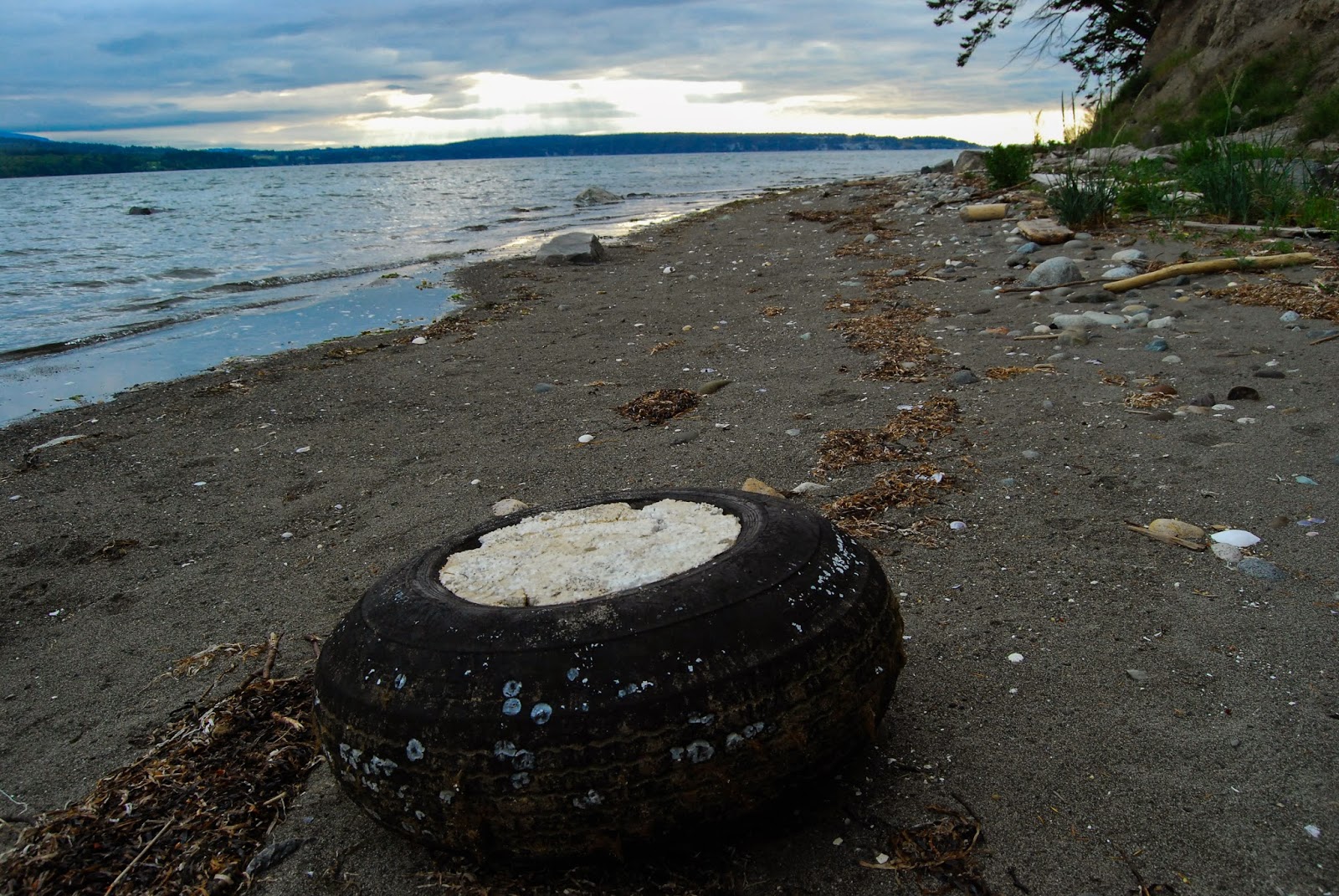Here's a few things I've noticed:
- The mix of garbage shifts. Fewer people are hanging out in public places in the Northwest because of the turn in the weather. That means fewer caches of beer cans on the street and in bushes.
- Paper garbage is decomposing in place. That means more recyclable containers and plastic.
- Recyclables are gathering in drains again, brought there by storm runoff
Personally, I've been struggling with some frustrations.
I was surprised last night to notice that my adopt-a-stop here on Finn Hill was full to the brim, less than two weeks after my last trip to empty it. Visiting it today, I found it stuffed full of empty cans from our local teenagers' favorite brew - Steel Reserve. I understand - I was a teenager once - but crushing the cans would be a nice gesture, boys :-).
A lot of the rest of the garbage was neatly tied bags of dog excreta. While I'm glad it doesn't wind up on the ground and in our storm runoff drains, I do see my adopt-a-stop can as somewhat of an attractive nuisance in that regard. Again, I understand - as a dog owner, it's more attractive to drop my bagged poop in a convenient roadside can rather than packing it all the way home. Still, it makes adopt-a-stop duty a little less pleasant.
This week, the stop was littered with cigarette butts again. What can we do to shift the societal norm towards putting butts in the trash rather than on the ground?
Random musings from your faithful blogger.
Finally, we've been the target of theft - three times now - of our garbage cart. Three times in the last year it's disappeared from in front of the house during the 12 hours between collection and walking it back to the house. Finn Hill neighbors, are others being targeted?
Enjoy the fall, Seatttle - and keep on picking up one piece a day.






































